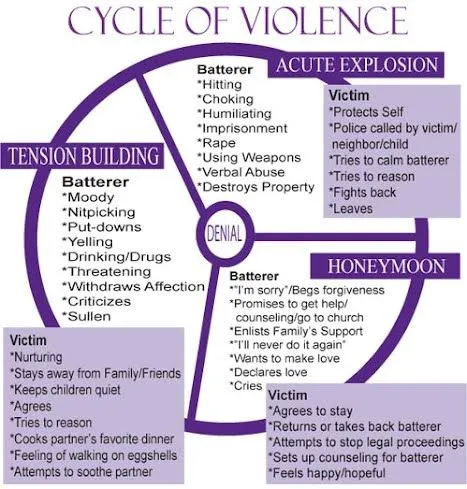What is the Honeymoon Phase
The honeymoon phase is a deceptive period in the cycle of abuse, often following an incident of abuse. It’s characterized by loving, apologetic, and seemingly changed behavior from the abuser. This phase serves to lure the victim back into the relationship, creating a false sense of hope and security. Understanding the honeymoon phase is crucial for recognizing the cyclical nature of abuse and preventing further harm. It can be a manipulative tactic used by abusers to maintain control, making it difficult for victims to leave. The goal is to regain the victim’s trust and continue the relationship.
Initial Idealization
Initially, the abuser might shower the victim with affection and compliments. They often express remorse and promise that the abusive behavior will never happen again. This behavior often involves an intensified period of what seems like love and care. This period is a tactic to rebuild trust and prevent the victim from leaving the relationship. The abuser might use this phase to subtly manipulate the victim by making them feel guilty for the previous incidents, reinforcing their dependency.
Creating a facade
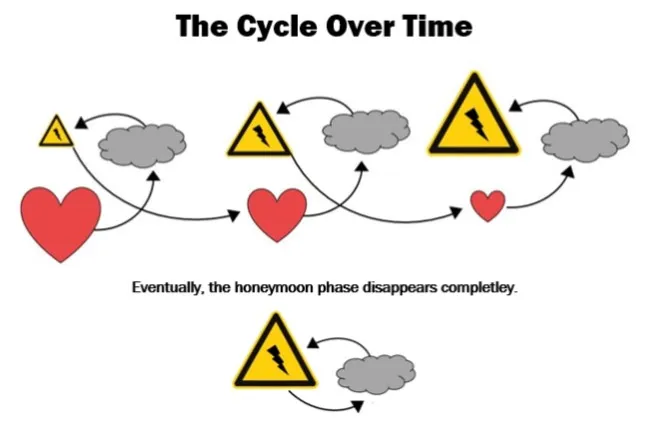
Abusers often create a public image of a loving partner, which often doesn’t match the private reality. They are often very charming to others, making it difficult for outsiders to believe that abuse is occurring. This facade serves to protect the abuser’s reputation and further isolate the victim. The abuser will often go to great lengths to maintain this public image, which further traps the victim in the relationship. It also helps to manipulate friends and family, making them doubt the victim’s claims.
Building trust
The honeymoon phase is all about regaining the victim’s trust. Abusers will make promises of change and provide a sense of safety. This is accomplished by making amends for previous behavior, often through gifts and affectionate gestures. These actions create an illusion of a healthy relationship and reinforce the victim’s hope for change. Building trust is a critical element in the cycle of abuse, as it allows the abuser to maintain control and ensure the victim’s continued involvement.
The Cycle of Abuse
The cycle of abuse is a recurring pattern characterized by tension building, an incident of abuse, the honeymoon phase, and a return to the tension-building phase. Understanding this cycle is essential to recognize the patterns of abusive behavior. This understanding empowers victims to recognize the warning signs and seek help before the cycle repeats itself. The cycle makes it hard to leave because of the fleeting moments of happiness and the hope for improvement.
Tension Building
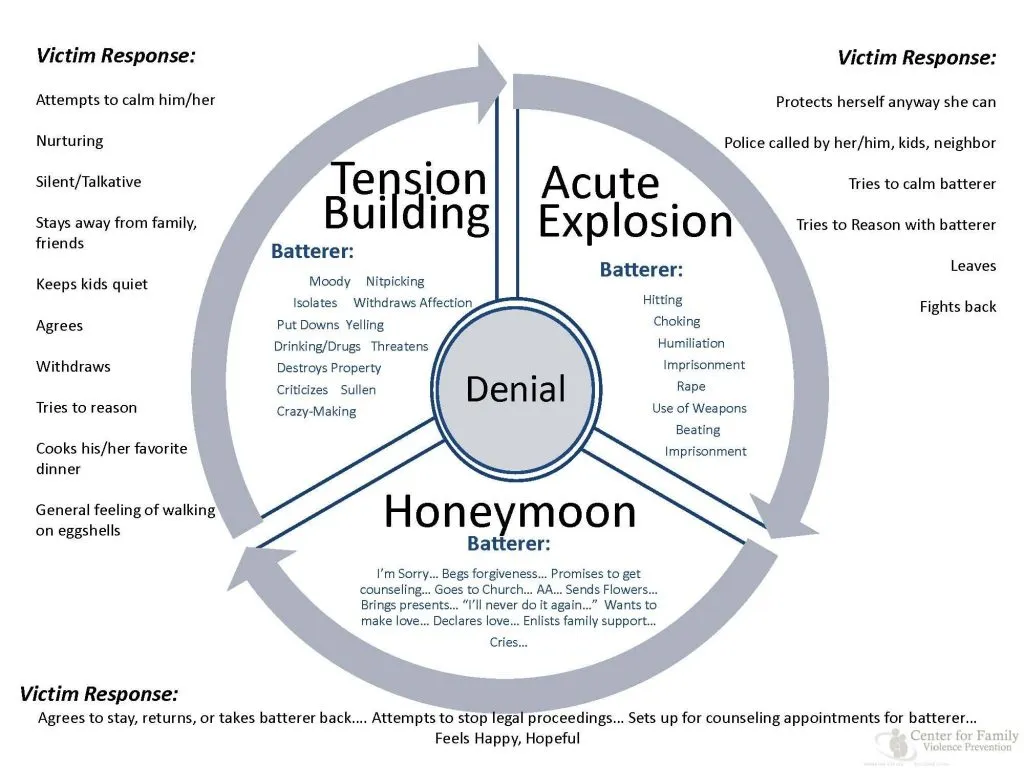
In the tension-building phase, the abuser becomes increasingly controlling, critical, and demanding. Communication becomes strained, and the victim feels like they’re walking on eggshells. Minor incidents can escalate into major arguments. The victim starts to feel anxious and fear an outburst from the abuser. This is a period of increased emotional stress and decreased communication, leading to the next phase.
Incident of Abuse
The tension culminates in an incident of abuse, which can be physical, emotional, verbal, or sexual. This is the explosion point where the abuser’s behavior crosses the line. The victim is left feeling hurt, scared, and often confused. The incident is usually followed by the abuser’s remorse and the initiation of the honeymoon phase. This stage is designed to break the victim’s will and instill fear.
Reconciliation or Honeymoon Phase
Following the incident, the abuser often tries to win back the victim’s trust through apologies, promises, and gifts. This reconciliation phase is an attempt to restore the relationship to a semblance of normalcy. It provides a temporary reprieve, creating a false sense of security. This phase is a manipulative tactic, often preventing the victim from leaving the abusive relationship.
Spotting the Honeymoon Phase
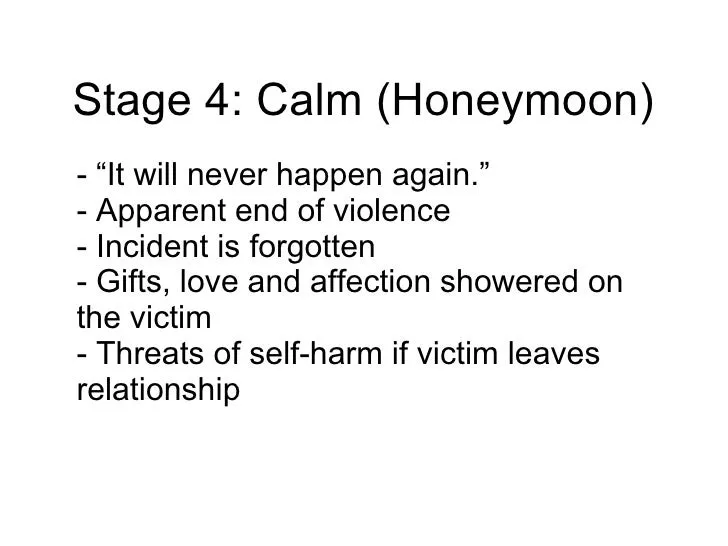
Identifying the honeymoon phase can be tricky, as it often appears to be a positive time in the relationship. However, certain behaviors and patterns can signal that the cycle of abuse is still in play. Recognizing these signs is crucial to protecting yourself. Being aware of these signs helps you to avoid being lured back into the abusive relationship. You should always be aware of the patterns of an abusive relationship.
Excessive Apologies and Promises
Abusers often offer profuse apologies and make promises to change their behavior. However, these apologies and promises are rarely followed by lasting change. These can be signs that something is off. The abuser may use these promises to manipulate the victim and regain their trust. Recognize that words are empty if not followed by action. True change requires consistent effort.
Gifts and Gestures
Abusers may shower the victim with gifts, affection, and grand gestures to regain their favor. These gestures can be a form of manipulation aimed at distracting the victim from the underlying abusive behavior. While these gifts can seem generous, they are often used to control and manipulate. These gestures may not be genuine acts of love but calculated attempts to maintain control and keep the victim in the relationship.
Rapid Relationship Progression
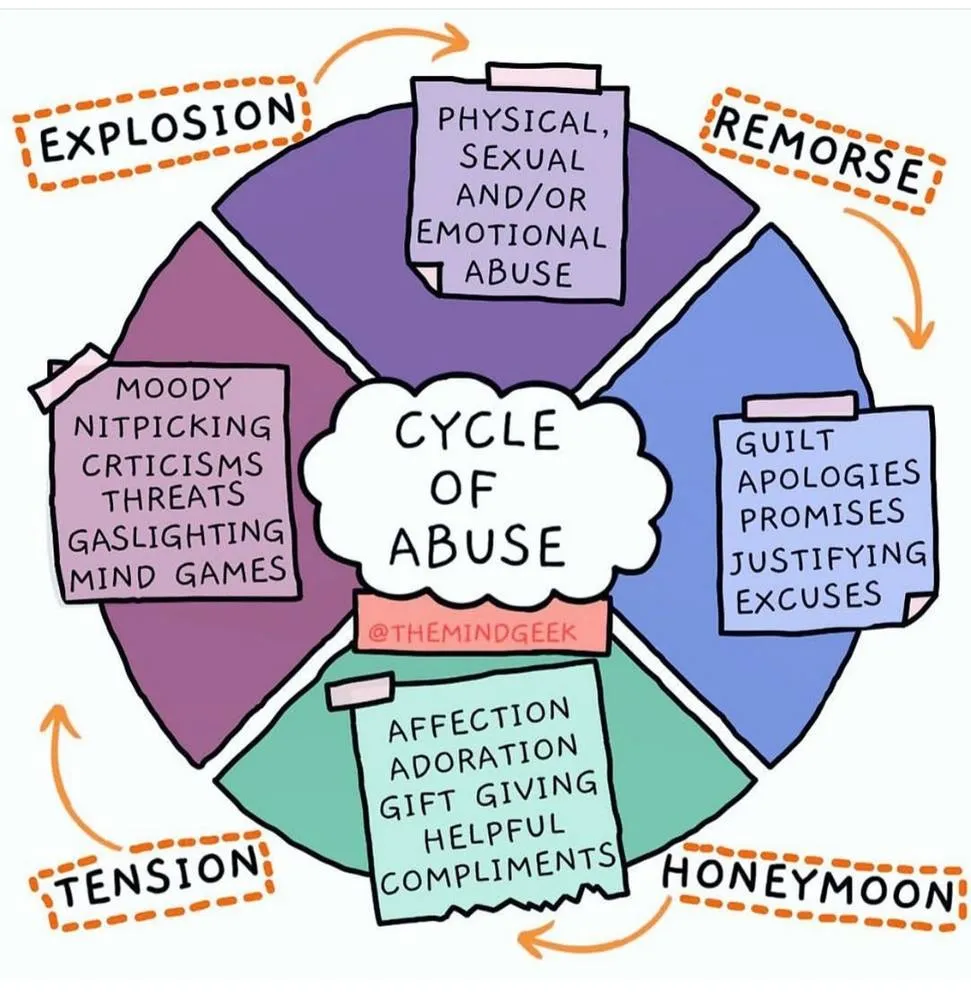
During the honeymoon phase, the abuser may push for a rapid progression in the relationship, such as moving in together or getting engaged. This can be a tactic to further isolate the victim and increase their dependency on the abuser. The abuser may try to get the victim to commit to the relationship before they fully understand the situation. Rapid commitment can be a sign of manipulative behavior.
Isolation Tactics During Honeymoon Phase
Even during the honeymoon phase, abusers may subtly implement isolation tactics to control the victim. These tactics are used to erode the victim’s support network and increase their dependency on the abuser. Isolation is a crucial part of the abuse cycle, as it limits the victim’s ability to seek help and leave the relationship. The abuser will try to distance the victim from friends and family.
Controlling behavior
The abuser may become increasingly controlling of the victim’s time, actions, and relationships. This can manifest as jealousy, possessiveness, or demands for constant contact. The abuser will become more involved with their victim’s life, making it harder for them to seek outside help. This control is a clear sign of abuse and a way for abusers to maintain dominance. Controlling behavior also includes monitoring the victim’s phone and social media.
Emotional manipulation

The abuser may use guilt, threats, or emotional blackmail to manipulate the victim’s emotions. They may try to make the victim feel responsible for their happiness and use their vulnerability against them. This manipulation can be subtle and difficult to recognize. Emotional manipulation can deeply affect a victim’s self-esteem and create a sense of dependency. It often leads the victim to believe that the abuse is their fault.
Impact of the Honeymoon Phase
The honeymoon phase can have severe psychological and emotional impacts on victims. It creates confusion, hope, and a sense of attachment that makes it difficult to leave the relationship. Understanding the emotional toll of the honeymoon phase is essential for recognizing the need for help. The long-term effects can be devastating, leading to mental health issues.
Psychological Effects
Victims of abuse may experience anxiety, depression, and post-traumatic stress disorder (PTSD). The cycle of abuse, including the honeymoon phase, can be emotionally draining. These psychological effects can significantly affect a victim’s mental health. It’s important to recognize these symptoms and seek professional help. Trauma from the abuse can stay with the victim for a long time.
Damage to self-esteem
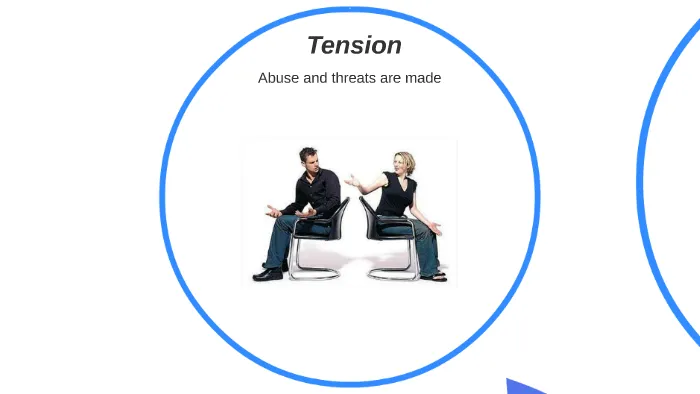
The constant ups and downs of the abuse cycle can erode the victim’s self-esteem, making them feel worthless and dependent. The honeymoon phase, despite its apparent positivity, also contributes to low self-worth. The abuser’s control and manipulative behavior erode the victim’s sense of self. The cycle reinforces negative beliefs about themselves. It’s a constant reminder of the victim’s perceived faults.
Maintaining the Abuse Cycle
The honeymoon phase is a critical component of the abuse cycle, as it reinforces the pattern. It creates a false sense of hope and makes it harder for victims to leave. The abuser uses the honeymoon phase to maintain control and continue the abuse. The cycle repeats itself, and the victim becomes trapped. The victim often finds it difficult to break free because they are hoping the abuser has changed.
Breaking Free
Breaking free from the cycle of abuse requires recognizing the patterns, seeking support, and taking steps to ensure safety. The process can be challenging, but it’s possible. Leaving the abusive relationship is the most important step. Seeking help from domestic violence hotlines and support groups is critical. Developing a safety plan is essential, including having a place to go and a support network. It is important to remember that you are not alone.
